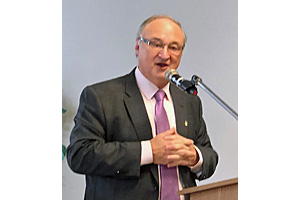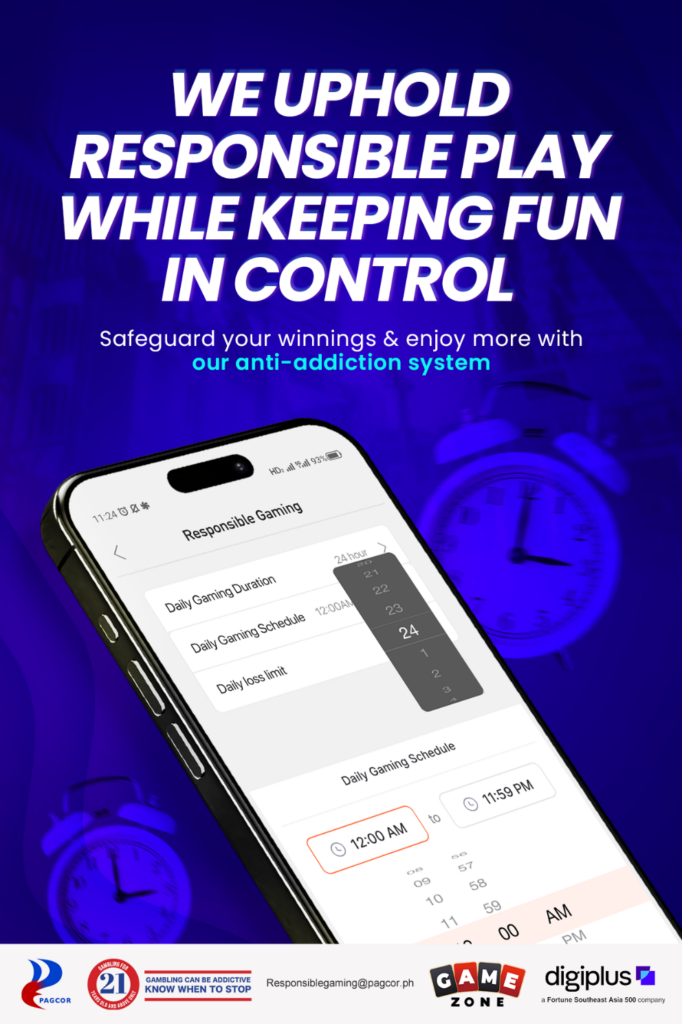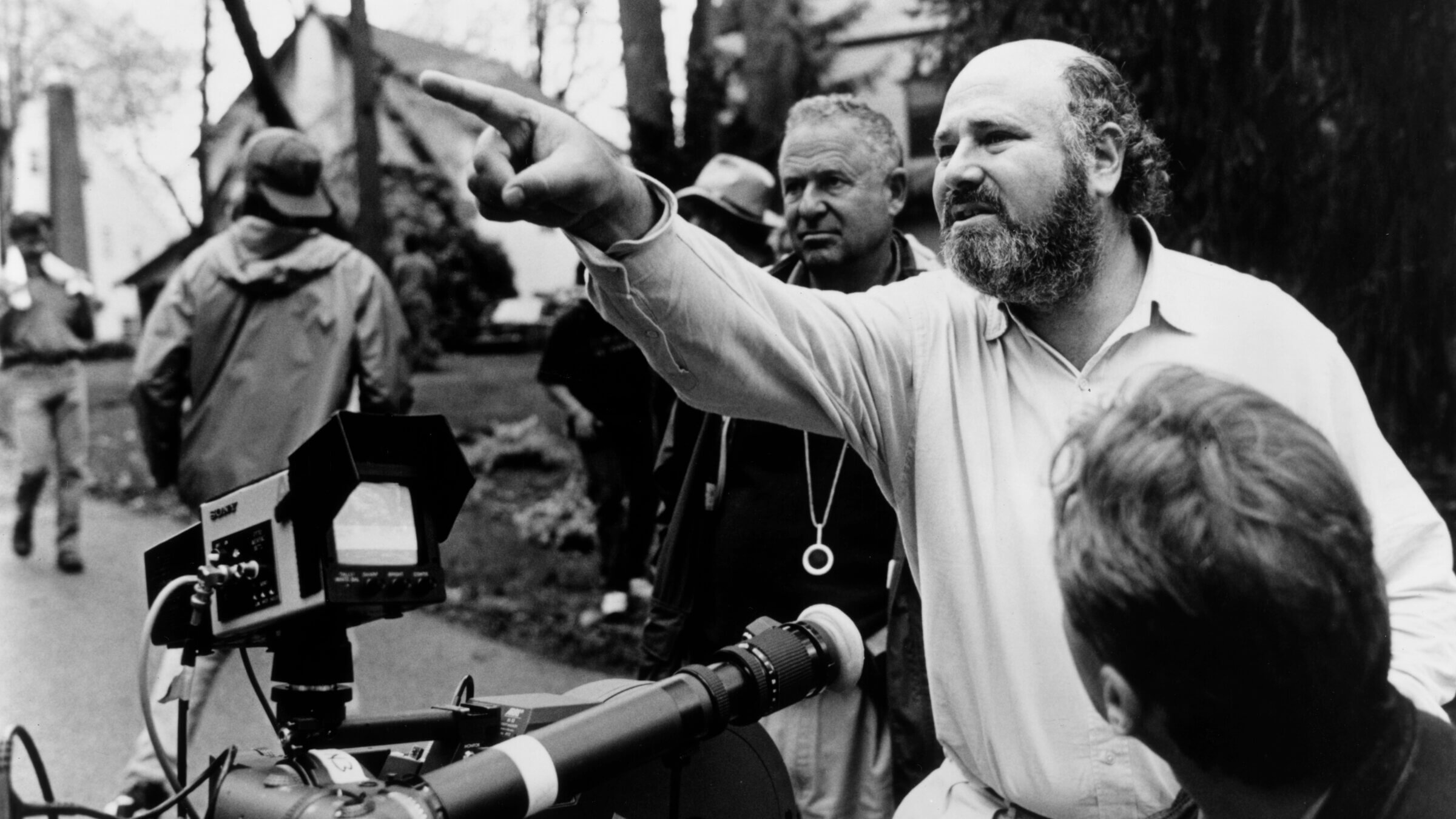Features
Pastor Rudy Fidel has had an unabiding love for Jews and Israel for over 40 years
 By BERNIE BELLAN In formulating ideas for writing this particular article I spent a considerable amount of time reading materials pertaining to Christian Zionism. I admit that I am still more than a little confused when I hear devout Christians refer to their belief in “Hashem,” using the same term as one would expect to hear from someone who is Jewish.
By BERNIE BELLAN In formulating ideas for writing this particular article I spent a considerable amount of time reading materials pertaining to Christian Zionism. I admit that I am still more than a little confused when I hear devout Christians refer to their belief in “Hashem,” using the same term as one would expect to hear from someone who is Jewish.
Yet, as I read more about the long history of Christian Zionism and its various permutations I can more easily understand how someone can claim to be both a devout Christian and an ardent Zionist.
But, when you hear someone like Pastor Rudy Fidel expound upon his love for Israel, as he did to at a recent meeting of the Remis Lecture Group at the Gwen Secter Centre on October 20th, well – trying to understand Fidel’s religious orientation is no easy task.
Fidel’s love for Israel is obvious; as of the time of writing he has been to Israel 23 times, beginning in 1986. As pastor of Faith Temple for the past 40 years he has been consistent and steadfast not only in promoting support for Israel, his devotion has led to others in his church contributing hundreds of thousands of dollars to Israel.
During his talk at the Gwen Secter Centre Fidel referred to one particular couple that belongs to Faith Temple (although without divulging their names) who have purchased an astounding five ambulances for Magen David Adom, on top of which they have contributed $100,000 for Holocaust survivors.
But, when it comes to explaining what has led Fidel to harbour such a deep love for Israel and a general affinity for Jews, well, it’s not easy obtaining an answer from him for that.
In material found on the Christian Friends of Israel website, it’s noted that Fidel was mentored by Dr. Ingrid Bergner when she was Fidel’s predecessor as pastor of Faith Temple. According to the website, “Dr. Bergner visited Israel in 1967, just two weeks before the Six Day War and returned seared with a passion for this holy land…It was Bergner who mentored Rudy through his long years at Faith Temple…But he not only undertook the leadership of the church – he undertook the mantle of leading groups to Israel.”
The Six Day War, it has been observed, was not only pivotal in awakening a much closer interest and affection for Israel among many Jews, it also led to much stronger support among many branches of Protestant Christianity. For many Evangelical Christians, Israel’s lighting victory in that war was a sign that the fulfillment of the prophecy of the coming of the Messiah was at hand.
Rudy Fidel, however, simply dispenses with any talk of the return of the Messiah. Something he said to his audience at Gwen Secter when he spoke – and which I’m sure came as quite the surprise to almost everyone who was there, is that there is not a single cross on display at Faith Temple.
For that matter, if you had walked into the room not knowing that Fidel is a Christian pastor, there is almost nothing in what he said that would have made you think he is anything but Jewish.
“The only agenda I have is to love Israel,” he said. “I love Judaism.”
In 1983, Fidel said, “when I made a personal commitment to God, I went to a travel agent and got a bunch of brochures about Israel.” As was noted, that was the start not only of Fidel going to Israel as the leader of many different tour groups, it also led to him bringing other Christian pastors to Israel so that they, too, would be encouraged to bring their parishioners to Israel.
Fidel referred in particular to the example of Reverend Raymond Maclean, a Native pastor who has been to Israel an incredible 32 times.
Continuing in the vein of his admiration of the Jewish people, Fidel went on to say that his “favourite character in the Bible is Jacob. I see him in Larry Vickar, in Earl Barish, and in Alan Yusim (who was a former director of B’nai Brith Midwest Region in Winnipeg).”
It was Alan Yusim who asked Fidel to participate in B’nai Brith’s annual Holocaust week event, “Unto Every Person There is a Name,” when various individuals are invited to read out loud the names of individuals who perished in the Holocaust at a ceremony held at the Manitoba Legislature.
Fidel said he was deeply touched by that invitation, which came in 2003. He observed that the night before the ceremony, when he was practicing reading the names of those Holocaust victims so that he would not stumble over their pronunciation, he had what he described as an “epiphany.”
Developing close relationships with Jewish organizations and leaders of those organizations, such as Alan Yuism, has been key to what Rudy Fidel has strived to accomplish, he explained. He spoke particularly fondly of the friendship he and his wife, Gina, have maintained over the years with Larry and Tove Vickar, noting that friendship originated way back when a young Tove Vickar, recently arrived here from Israel, was studying English for the first time and Gina was her teacher.
Fidel observed that Larry Vickar has been generous in his support for a multitude of causes, going so far as helping “to build homes in the Philippines. He puts his heart into everything he does,” Fidel said.
So, if the Six Day War was a pivotal event for Dr. Ingrid Bergner who, in turn, imbued Rudy Fidel with an ongoing devotion to Israel, it was his later encounters with Holocaust survivors that led to another facet of his love for Jews.
In 2005, Fidel said, he was part of a March of the Living tour to Poland and Israel. When he was at Auschwitz he met a survivor by the name of Felix Opatowski, who had been an inmate in Auschwitz. Opatowski was actually a part of the group that planned on blowing up one of the crematoria at Auschwitz (until the SS learned of the plot) and, even though he was severely tortured (with all his fingernails pulled out, along with the loss of an eye and hearing in one ear), he managed to survive.
According to Fidel, Opatowski said that the “ground at Auschwitz is as holy as Eretz Yisrael ,” which didn’t go over well with Israeli authorities. But meeting Opatowski was another life-changing moment for Fidel, he explained, and one that led him on a path devoted to helping Holocaust survivors. He noted that there are still 150,000 Holocaust survivors alive in the world today and, working with an organization known as “Emunah,” which is devoted to helping survivors, Fidel has raised over $20,000 for the cause.
Not only has Fidel played a significant role in helping Holocaust survivors, he’s also long been active in helping Jews in Ukraine and in Cuba. (He noted that he’s been to Cuba eight different times, where he’s helped to forge ties with the Cuban Jewish community.)
But, after he concluded his talk, Fidel was challenged by audience members with some questions that elicited some evasive answers which might lead one to wonder just what motivates Rudy Fidel’s deep love for Jews.
One question that seemed to catch him off guard was: “Where does Jesus Christ come in?”
Fidel begged off answering, saying, “I’d rather not talk about that. Maybe it was my passion 40 years ago, but it isn’t any more.”
Another audience member, alluding to an observation Fidel had made earlier that over 150 different individuals whose last name was Fidel are recorded at Yad Vashem as having died in the Holocaust, asked whether Fidel had ever taken “a DNA test” to try and determine whether he actually had Jewish ancestry himself.
Fidel answered that he hadn’t, but it was certainly an interesting idea.
Finally, someone else asked him “Are all your congregants pro Israel?”
Fidel answered, “Most of them.”
Quite the interesting fellow – that Rudy Fidel. It’s not the first time we’ve written about him in an article for this paper, but like many other Christians who harbour a deep love for Israel and Jews in general, we certainly appreciate all that he’s done over the years to strengthen ties between Christians and Jews.
Features
So, what’s the deal with the honey scene in ‘Marty Supreme?’

By Olivia Haynie December 29, 2025 This story was originally published in the Forward. Click here to get the Forward’s free email newsletters delivered to your inbox.
There are a lot of jarring scenes in Marty Supreme, Josh Safdie’s movie about a young Jew in the 1950s willing to do anything to secure his spot in table tennis history. There’s the one where Marty (Timothée Chalamet) gets spanked with a ping-pong paddle; there’s the one where a gas station explodes. And the one where Marty, naked in a bathtub, falls through the floor of a cheap motel. But the one that everybody online seems to be talking about is a flashback of an Auschwitz story told by Marty’s friend and fellow ping-ponger Béla Kletzki (Géza Röhrig, best known for his role as a Sonderkommando in Son of Saul).
Kletzki tells the unsympathetic ink tycoon Milton Rockwell (Kevin O’Leary) about how the Nazis, impressed by his table tennis skills, spared his life and recruited him to disarm bombs. One day, while grappling with a bomb in the woods, Kletzki stumbled across a honeycomb. He smeared the honey across his body and returned to the camp, where he let his fellow prisoners lick it off his body. The scene is a sensory nightmare, primarily shot in close-ups of wet tongues licking sticky honey off Kletzki’s hairy body. For some, it was also … funny?
Many have reported that the scene has been triggering a lot of laughter in their theaters. My audience in Wilmington, North Carolina, certainly had a good chuckle — with the exception of my mother, who instantly started sobbing. I sat in stunned silence, unsure at first what to make of the sharp turn the film had suddenly taken. One post on X that got nearly 6,000 likes admonished Safdie for his “insane Holocaust joke.” Many users replied that the scene was in no way meant to be funny, with one even calling it “the most sincere scene in the whole movie.”
For me, the scene shows the sheer desperation of those in the concentration camps, as well as the self-sacrifice that was essential to survival. And yet many have interpreted it as merely shock humor.
Laughter could be understood as an inevitable reaction to discomfort and shock at a scene that feels so out of place in what has, up to that point, been a pretty comedic film. The story is sandwiched between Marty’s humorous attempts to embarrass Rockwell and seduce his wife. Viewers may have mistaken the scene as a joke since the film’s opening credits sequence of sperm swimming through fallopian tubes gives the impression you will be watching a comedy interspersed with some tense ping-pong playing.
The reaction could also be part of what some in the movie theater industry are calling the “laugh epidemic.” In The New York Times, Marie Solis explored the inappropriate laughter in movie theaters that seems to be increasingly common. The rise of meme culture and the dissolution of clear genres (Marty Supreme could be categorized as somewhere between drama and comedy), she writes, have primed audiences to laugh at moments that may not have been meant to be funny.
The audience’s inability to process the honey scene as sincere may also be a sign of a society that has become more disconnected from the traumas of the past. It would not be the first time that people, unable to comprehend the horrors of the Holocaust, have instead derided the tales of abuse as pure fiction. But Kletzki’s story is based on the real experiences of Alojzy Ehrlich, a ping-pong player imprisoned at Auschwitz. The scene is not supposed to be humorous trauma porn — Safdie has called it a “beautiful story” about the “camaraderie” found within the camps. It also serves as an important reminder of all that Marty is fighting for.
The events of the film take place only seven years after the Holocaust, and the macabre honey imagery encapsulates the dehumanization the Jews experienced. Marty is motivated not just by a desire to prove himself as an athlete and rise above what his uncle and mother expect of him, but above what the world expects of him as a Jew. His drive to reclaim Jewish pride is further underscored when he brings back a piece of an Egyptian pyramid to his mother, telling her, “We built this.”
Without understanding this background, the honey scene will come off as out of place and ridiculous. And the lengths Marty is willing to go to to make something of himself cannot be fully appreciated. The film’s description on the review-app Letterboxd says Marty Supreme is about one man who “goes to hell and back in pursuit of greatness.” But behind Marty is the story of a whole people who have gone through hell; they too are trying to find their way back.
Olivia Haynie is an editorial fellow at the Forward.
This story was originally published on the Forward.
Features
Paghahambing ng One-on-One Matches at Multiplayer Challenges sa Pusoy in English

Ang Pusoy, na kilala din bilang Chinese Poker, ay patuloy na sumisikat sa buong mundo, kumukuha ng interes ng mga manlalaro mula sa iba’t ibang bansa. Ang mga online platforms ay nagpapadali sa pag-access nito. Ang online version nito ay lubos na nagpasigla ng interes sa mga baguhan at casual players, na nagdulot ng diskusyon kung alin ang mas madali: ang paglalaro ng Pusoy one-on-one o sa multiplayer settings.
Habang nailipat sa digital platforms ang Pusoy, napakahalaga na maunawaan ang mga format nito upang mapahusay ang karanasan sa laro. Malaking epekto ang bilang ng mga kalaban pagdating sa istilo ng laro, antas ng kahirapan, at ang ganap na gameplay dynamics. Ang mga platforms tulad ng GameZone ay nagbibigay ng angkop na espasyo para sa mga manlalaro na masubukan ang parehong one-on-one at multiplayer Pusoy, na akma para sa iba’t ibang klase ng players depende sa kanilang kasanayan at kagustuhan.
Mga Bentahe ng One-on-One Pusoy
Simpleng Gameplay
Sa one-on-one Pusoy in English, dalawa lang ang naglalaban—isang manlalaro at isang kalaban. Dahil dito, mas madali ang bawat laban. Ang pokus ng mga manlalaro ay nakatuon lamang sa kanilang sariling 13 cards at sa mga galaw ng kalaban, kaya’t nababawasan ang pagiging komplikado.
Para sa mga baguhan, ideal ang one-on-one matches upang:
- Sanayin ang tamang pagsasaayos ng cards.
- Matutunan ang tamang ranggo ng bawat kamay.
- Magsanay na maiwasan ang mag-foul sa laro.
Ang simpleng gameplay ay nagbibigay ng matibay na pundasyon para sa mas kumplikadong karanasan sa multiplayer matches.
Mga Estratehiya mula sa Pagmamasid
Sa one-on-one matches, mas madaling maunawaan ang istilo ng kalaban dahil limitado lamang ang galaw na kailangan sundan. Maaari mong obserbahan ang mga sumusunod na patterns:
- Konserbatibong pagkakaayos o agresibong strategy.
- Madalas na pagkakamali o overconfidence.
- Labis na pagtuon sa isang grupo ng cards.
Dahil dito, nagkakaroon ng pagkakataon ang mga manlalaro na isaayos ang kanilang estratehiya upang mas epektibong maka-responde sa galaw ng kalaban, partikular kung maglalaro sa competitive platforms tulad ng GameZone.
Mas Mababang Pressure
Dahil one-on-one lamang ang laban, mababawasan ang mental at emotional stress. Walang ibang kalaban na makaka-distract, na nagbibigay ng pagkakataon para sa mga baguhan na matuto nang walang matinding parusa sa kanilang mga pagkakamali. Nagiging stepping stone ito patungo sa mas dynamic na multiplayer matches.
Ang Hamon ng Multiplayer Pusoy
Mas Komplikado at Mas Malalim na Gameplay
Sa Multiplayer Pusoy, madaragdagan ang bilang ng kalaban, kaya mas nagiging komplikado ang laro. Kailangan kalkulahin ng bawat manlalaro ang galaw ng maraming tao at ang pagkakaayos nila ng cards.
Ang ilang hamon ng multiplayer ay:
- Pagbabalanse ng lakas ng cards sa tatlong grupo.
- Pag-iwas sa labis na peligro habang nagiging kompetitibo.
- Pagtatagumpayan ang lahat ng kalaban nang sabay-sabay.
Ang ganitong klase ng gameplay ay nangangailangan ng maingat na pagpaplano, prediksyon, at strategic na pasensiya.
Mas Malakas na Mental Pressure
Mas mataas ang psychological demand sa multiplayer, dahil mabilis ang galawan at mas mahirap manatiling kalmado sa gitna ng mas maraming kalaban. Kabilang dito ang:
- Bilisan ang pagdedesisyon kahit under pressure.
- Paano mananatiling focused sa gitna ng mga distractions.
- Pagkakaroon ng emosyonal na kontrol matapos ang sunod-sunod na talo.
Mas exciting ito para sa mga manlalarong gusto ng matinding hamon at pagmamalasakit sa estratehiya.
GameZone: Ang Bagong Tahanan ng Modern Pusoy

Ang GameZone online ay isang kahanga-hangang platform para sa mga naglalaro ng Pusoy in English. Nagbibigay ito ng opsyon para sa parehong one-on-one at multiplayer matches, akma para sa kahit anong antas ng kasanayan.
Mga feature ng GameZone:
- Madaling English interface para sa user-friendly na gameplay.
- Real-player matches imbes na kalaban ay bots.
- Mga tool para sa responsible play, tulad ng time reminder at spending limits.
Pagtatagal ng Pamanang Pusoy
Ang Pusoy card game in English ay nagpalawak ng abot nito sa mas maraming players mula sa iba’t ibang bahagi ng mundo habang pinapanatili ang tradisyunal nitong charm. Sa pamamagitan ng mga modernong platform tulad ng GameZone, mananatiling buhay at progresibo ang Pusoy, nakakabighani pa rin sa lahat ng antas ng manlalaro—mula sa casual enjoyment hanggang sa competitive challenges.
Mula sa maingat na pag-aayos ng mga cards hanggang sa pag-master ng estratehiya, ang Pusoy ay isang laro na nananatiling relevant habang ipinapakita ang masalimuot nitong gameplay dynamics na puno ng kultura at inobasyon.
Features
Rob Reiner asked the big questions. His death leaves us searching for answers.

Can men and women just be friends? Can you be in the revenge business too long? Why don’t you just make 10 louder and have that be the top number on your amp?
All are questions Rob Reiner sought to answer. In the wake of his and his wife’s unexpected deaths, which are being investigated as homicides, it’s hard not to reel with questions of our own: How could someone so beloved come to such a senseless end? How can we account for such a staggering loss to the culture when it came so prematurely? How can we juggle that grief and our horror over the violent murder of Jews at an Australian beach, gathered to celebrate the first night of Hanukkah, and still light candles of our own?
The act of asking may be a way forward, just as Rob Reiner first emerged from sitcom stardom by making inquiries.
In This is Spinal Tap, his first feature, he played the role of Marty DiBergi, the in-universe director of the documentary about the misbegotten 1982 U.S. concert tour of the eponymous metal band. He was, in a sense, culminating the work of his father, Carl Reiner, who launched a classic comedy record as the interviewer of Mel Brooks’ 2,000 Year Old Man. DiBergi as played by Reiner was a reverential interlocutor — one might say a fanboy — but he did take time to query Nigel Tufnell as to why his amp went to 11. And, quoting a bad review, he asked “What day did the Lord create Spinal Tap, and couldn’t he have rested on that day too?”
But Reiner had larger questions to mull over. And in this capacity — not just his iconic scene at Katz’s Deli in When Harry Met Sally or the goblin Yiddishkeit of Miracle Max in The Princess Bride — he was a fundamentally Jewish director.
Stand By Me is a poignant meditation on death through the eyes of childhood — it asks what we remember and how those early experiences shape us. The Princess Bride is a storybook consideration of love — it wonders at the price of seeking or avenging it at all costs. A Few Good Men is a trenchant, cynical-for-Aaron Sorkin, inquest of abuse in the military — how can it happen in an atmosphere of discipline.
In his public life, Reiner was an activist. He asked how he could end cigarette smoking. He asked why gay couples couldn’t marry like straight ones. He asked what Russia may have had on President Trump. This fall, with the FCC’s crackdown on Jimmy Kimmel, he asked if he would soon be censored. He led with the Jewish question of how the world might be repaired.
Guttingly, in perhaps his most personal project, 2015’s Being Charlie, co-written by his son Nick he wondered how a parent can help a child struggling with addiction. (Nick was questioned by the LAPD concerning his parents’ deaths and was placed under arrest.)
Related
None of the questions had pat answers. Taken together, there’s scarcely a part of life that Reiner’s filmography overlooked, including the best way to end it, in 2007’s The Bucket List.
Judging by the longevity of his parents, both of whom lived into their 90s, it’s entirely possible Reiner had much more to ask of the world. That we won’t get to see another film by him, or spot him on the news weighing in on the latest democratic aberration, is hard to swallow.
Yet there is some small comfort in the note Reiner went out on. In October, he unveiled Spinal Tap II: The Beginning of the End, a valedictory moment in a long and celebrated career.
Reiner once again returned to the role of DiBergi. I saw a special prescreening with a live Q&A after the film. It was the day Charlie Kirk was assassinated. I half-expected Reiner to break character and address political violence — his previous film, God & Country, was a documentary on Christian Nationalism.
But Reiner never showed up — only Marty DiBergi, sitting with Nigel Tuffnell (Christopher Guest), David St. Hubbins (Michael McKean) and Derek Smalls (Harry Shearer) at Grauman’s Chinese Theater in Los Angeles. The interview was broadcast to theaters across the country, with viewer-submitted questions like “What, in fact, did the glove from Smell the Glove smell like?” (Minty.) And “Who was the inspiration for ‘Big Bottom?’” (Della Reese.)
Related
- Actor-Director Rob Reiner dies at 78
- Carl Reiner On Judaism, Atheism And The ‘Monster’ In The White House
- Mandy Patinkin On His Favorite ‘Princess Bride’ Quote
DiBergi had one question for the audience: “How did you feel about the film?”
The applause was rapturous, but DiBergi still couldn’t get over Nigel Tuffnell’s Marshall amp, which now stretched beyond 11 and into infinity.
“How can that be?” he asked. “How can you go to infinity? How loud is that?”
There’s no limit, Tuffnell assured him. “Why should there be a limit?”
Reiner, an artist of boundless curiosity and humanity, was limitless. His remit was to reason why. He’ll be impossible to replace, but in asking difficult questions, we can honor him.
The post Rob Reiner asked the big questions. His death leaves us searching for answers. appeared first on The Forward.

